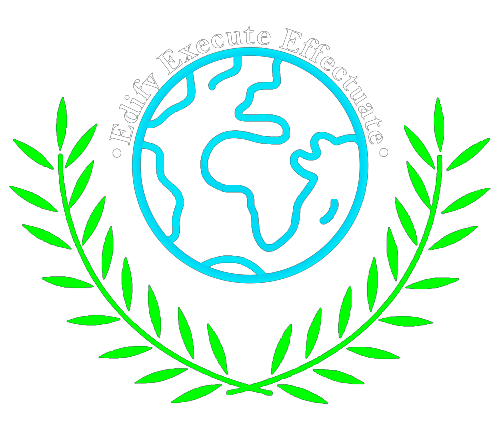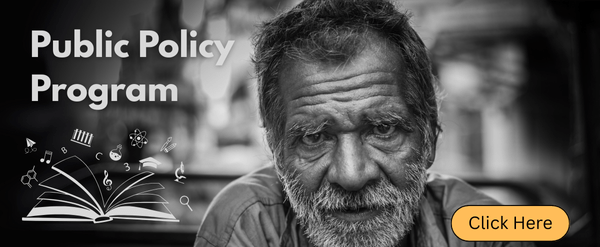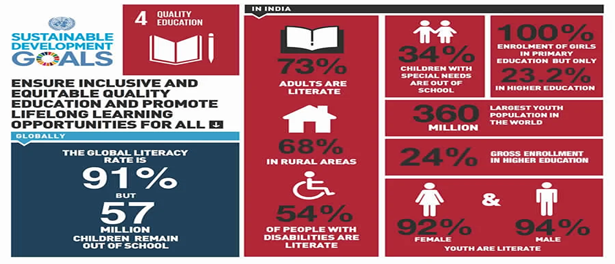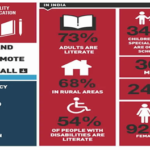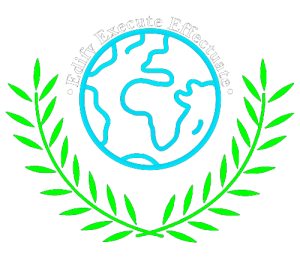By Middat Khan
Introduction
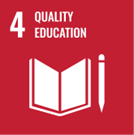 Education is not only a human right but also a powerful tool for transforming lives, lifting individuals out of poverty, and promoting sustainable development. Recognizing its importance, the United Nations established Sustainable Development Goal (SDG) 4, which aims to ensure inclusive and equitable quality education and promote lifelong learning opportunities for all by 2030. SDG 4 focuses on access to education, equity, quality, and learning outcomes at all levels, from primary education to higher education and technical training.
Education is not only a human right but also a powerful tool for transforming lives, lifting individuals out of poverty, and promoting sustainable development. Recognizing its importance, the United Nations established Sustainable Development Goal (SDG) 4, which aims to ensure inclusive and equitable quality education and promote lifelong learning opportunities for all by 2030. SDG 4 focuses on access to education, equity, quality, and learning outcomes at all levels, from primary education to higher education and technical training.
Why Quality Education Matters
Education is the foundation for personal and social development. It empowers individuals with the skills and knowledge necessary to participate fully in their communities and the global economy. Access to quality education not only helps break cycles of poverty but also fosters peace, justice, and stronger institutions.
However, despite the progress made globally, millions of children, particularly in developing countries, still lack access to proper education. Many others attend schools where the quality of education is substandard, leading to poor learning outcomes. The COVID19 pandemic further exacerbated these disparities, as millions of children faced school closures and limited access to remote learning tools.
The Role of Technology in Education
Technology has the potential to bridge the educational gap by providing digital learning tools and platforms that are accessible to students in remote or underserved areas. Online courses, mobile learning applications, and digital classrooms can make education more inclusive and reach populations that have traditionally been left behind. However, this requires access to the internet, computers, and training for teachers and students alike—challenges that many countries still face.
SDG 4: Quality Education Targets and Indicators
The United Nations’ Sustainable Development Goal (SDG) 4 aims to ensure inclusive, equitable, and quality education for all and promote lifelong learning by 2030. This goal recognizes that education is essential to achieving other SDGs, such as poverty eradication, gender equality, and economic growth. SDG 4 includes 10 specific targets, each with measurable indicators, designed to address educational access, quality, equity, and infrastructure at every level, from early childhood through adult education.
Key Targets of SDG 4
Target 4.1: Free, Equitable, and Quality Primary and Secondary Education
By 2030, all girls and boys should complete free, equitable, and quality primary and secondary education that leads to relevant learning outcomes. This target focuses on ensuring that education systems provide foundational skills necessary for success in life and work.
Indicator: Completion rates and learning outcomes at the primary and secondary levels.
Target 4.2: Early Childhood Development and Pre-primary Education
All children should have access to quality early childhood development and pre-primary education by 2030, preparing them for primary school. The early years are critical for development, laying the foundation for future academic success.
Indicator: Participation in organized learning before primary school age.
Target 4.3: Affordable Technical, Vocational, and Tertiary Education
Ensure that women and men have equal access to affordable and quality technical, vocational, and tertiary education, including university. This target promotes pathways to decent work and economic opportunity.
Indicator: Enrollment rates in vocational and higher education programs.
Target 4.4: Skills for Employment, Decent Jobs, and Entrepreneurship
By 2030, a substantial increase in the number of youth and adults with relevant skills, particularly technical and vocational skills, is necessary to ensure employment, decent jobs, and entrepreneurship opportunities.
Indicator: Proportion of youth and adults with skills for work.
Target 4.5: Eliminate Gender Disparities and Vulnerability in Education
Gender disparities and inequalities in education should be eliminated by 2030, ensuring equal access for the vulnerable, including persons with disabilities, indigenous peoples, and children in vulnerable situations.
Indicator: Parity indices (female/male, rural/urban, etc.) for education indicators.
Target 4.6: Universal Literacy and Numeracy
Ensure that by 2030, all youth and a substantial proportion of adults, both men and women, achieve literacy and numeracy to engage effectively in work and society.
Indicator: Literacy and numeracy rates among youth and adults.
Target 4.7: Education for Sustainable Development and Global Citizenship
By 2030, all learners should acquire the knowledge and skills needed to promote sustainable development, including education on sustainable lifestyles, human rights, gender equality, peace, and global citizenship.
Indicator: Integration of sustainable development education into national policies and curricula.
Target 4.a: Build Safe and Inclusive Learning Environments
Educational facilities should be built or upgraded to be child, disability, and gendersensitive, providing safe, nonviolent, inclusive, and effective learning environments.
Indicator: Proportion of schools with access to basic services such as electricity, sanitation, and Internet.
Target 4.b: Expand Scholarships for Developing Countries
By 2020, expand the availability of scholarships for students from developing countries, especially least developed countries and small island developing states, for enrollment in higher education programs in developed and developing countries.
Indicator: Number of scholarships awarded to students from developing countries.
Target 4.c: Increase the Supply of Qualified Teachers
By 2030, increase the supply of qualified teachers, especially in developing countries, through international cooperation for teacher training.
Indicator: Proportion of teachers receiving training or qualified by standards.
Global Progress and Challenges
While significant progress has been made in improving access to education, challenges remain, especially in terms of quality and equity.
As of 2019, only 58% of students worldwide achieved minimum proficiency levels in reading at the end of primary school, with some countries seeing a decline in learning outcomes, particularly in mathematics and reading.
Teacher shortages and inadequate infrastructure continue to be major issues, especially in regions such as sub-Saharan Africa. In these regions, high student teacher ratios and limited access to professional development opportunities for teachers are common.
Participation in early childhood education is increasing, but there are still wide disparities between countries and regions. For instance, by 2022, 7 out of 10 children globally participated in organized learning the year before primary school age, showing recovery from the impact of COVID19.
Gender disparities remain in some regions, although overall participation rates for boys and girls are improving. Socioeconomic factors—such as family income, geographic location, and access to resources—continue to widen the gap in education outcomes, particularly in higher education and technical training.
India and SDG 4
India has made significant strides in improving access to education, particularly at the primary level, through initiatives such as Sarva Shiksha Abhiyan and the Right to Education Act. With a focus on universal quality education, the Indian government’s National Education Policy (NEP) 2020 aligns with the goals of SDG 4. Key areas of progress include:
Improved Enrolment Rates: The net enrolment ratio in primary education reached 88% in 201314.
Teacher Training: The NEP emphasizes better teacher education, aiming to provide high quality teaching to all students.
Digital Learning Initiatives: India has introduced several programs to enhance digital access to education, including Pradhan Mantri e-Vidya and the Swayam Prabha TV channels, aimed at ensuring learning continuity during disruptions like the COVID19 pandemic.
Despite these advancements, India faces challenges such as high dropout rates at the secondary level, a digital divide limiting access to technology for rural students, and teacher shortages in remote areas.
SDG 4: Quality Education India’s Commitment and Challenges
Sustainable Development Goal 4 (SDG 4) emphasizes the importance of ensuring inclusive and equitable quality education and promoting lifelong learning opportunities for all. Adopted in 2015 as part of the United Nations’ 2030 Agenda for Sustainable Development, SDG 4 plays a central role in empowering individuals and communities by unlocking the potential of education.
India has been at the forefront of efforts to achieve SDG 4, recognizing education as a vital driver of social and economic development. While significant progress has been made in improving access to education, especially for girls and marginalized communities, challenges related to quality, equity, and infrastructure remain.
India’s Intervention on SDG 4
At the 10th Session of the Open Working Group (OWG) on SDGs held in 2014, India’s Permanent Mission highlighted the transformative potential of empowering women through enabling technologies, particularly Information and Communication Technologies (ICT). According to Amit Narang, Counsellor of India’s Permanent Mission to the United Nations, harnessing ICT for women in education, healthcare, and rural development could be a gamechanger for developing countries. He proposed a specific target within the SDGs to use enabling technologies to empower women, demonstrating India’s forward-thinking approach to inclusive education.
India’s Progress on SDG 4
India has made notable progress in universalizing primary education through initiatives such as Sarva Shiksha Abhiyan (SSA), Mid-Day Meal Scheme, and Right to Education (RTE) Act, 2009. These efforts have led to improved enrollment rates for both boys and girls, particularly at the primary and elementary levels.
As of 201314, India’s net enrollment ratio in primary education stood at 88%, while the youth literacy rate was 94% for males and 92% for females. Despite these advancements, the country faces challenges in addressing gender disparities and ensuring that quality education is accessible to marginalized communities, including Scheduled Castes (SC), Scheduled Tribes (ST), and children with disabilities.
Challenges in Achieving SDG 4 in India
Despite these commendable efforts, India still faces significant challenges in achieving SDG 4:
- Access and Equity: Marginalized communities, especially in rural areas, continue to face barriers to education. Gender disparities persist, particularly in higher education and vocational training.
- Quality of Education: Many schools suffer from inadequate infrastructure and a shortage of qualified teachers, leading to poor learning outcomes.
- High Dropout Rates: Dropout rates remain a concern, especially at the secondary level, due to economic pressures, early marriages, and lack of interest in school.
- Digital Divide: The lack of access to digital learning resources, particularly in rural and remote areas, has widened the gap between urban and rural students, exacerbated by the COVID19 pandemic.
- Teacher Shortages: The shortage of qualified teachers, particularly in rural areas, coupled with inadequate professional development opportunities, hampers the delivery of quality education.
Key Schemes and Policies Supporting SDG 4 in India
- National Education Policy (NEP) 2020
The NEP 2020 is a transformative policy aimed at overhauling India’s education system by 2030. It emphasizes universal access to education, teacher training, and skill development to prepare students for 21stcentury challenges. Key features include:
Early Childhood Care and Education (ECCE): Ensures universal access to quality preschool education.
Holistic and Flexible Curriculum: Promotes a balanced curriculum that includes both academic and vocational subjects.
Equity and Inclusion: Focuses on marginalized groups such as girls, SC/ST, and children with disabilities.
- Samagra Shiksha Abhiyan (SSA)
Launched in 2018, SSA integrates various education programs to provide a holistic approach to school education from pre-primary to senior secondary levels. Its objectives include:
Universal access to education and improving retention rates.
Bridging gender and social category gaps in education.
Improving school infrastructure and learning materials.
- Right to Education (RTE) Act, 2009
The RTE Act makes free and compulsory education a legal right for children aged 614 years. It mandates a 25% reservation in private schools for disadvantaged children and focuses on inclusive education for all.
- Mid-Day Meal Scheme
This school feeding program is one of the largest in the world, aiming to combat hunger and malnutrition among school going children. The scheme has successfully improved attendance and retention rates and has contributed to better learning outcomes.
- Pradhan Mantri e-Vidya
Launched during the COVID19 pandemic, this initiative seeks to bridge the digital divide by providing students with access to online and digital learning platforms. It includes:
DIKSHA: A digital infrastructure for knowledge sharing.
Swayam Prabha TV Channels: E-learning channels for students without access to the internet.
One Class, One Channel: Dedicated content for each school grade via TV and radio.
- Rashtriya Uchchatar Shiksha Abhiyan (RUSA)
RUSA is a government initiative aimed at improving the quality of higher education in India, particularly in state universities and colleges. It focuses on enhancing infrastructure, promoting innovation, and fostering research and development.
- Beti Bachao, Beti Padhao (BBBP)
This initiative focuses on raising awareness about the importance of educating the girl child. It has been instrumental in increasing enrollment rates for girls, especially in regions with high gender inequality.
Linkages Between SDG 4 and Other SDGs
Achieving SDG 4 is essential for advancing many other SDGs, including:
- SDG 1 (No Poverty): Education is a key factor in breaking the cycle of poverty.
- SDG 5 (Gender Equality): Promoting education for girls directly supports gender equality.
- SDG 8 (Decent Work and Economic Growth): Quality education equips individuals with the skills necessary for productive employment and economic growth.
- SDG 10 (Reduced Inequalities): Ensuring equal access to education helps reduce social and economic inequalities.
Conclusion:
While India has made significant strides in enhancing educational access and equity, particularly through government-led programs such as the Right to Education (RTE) Act and Mid-Day Meal Scheme, challenges remain in fully achieving SDG 4. Issues like gender disparity, inadequate infrastructure, and teacher shortages are persistent obstacles that require targeted solutions.
Moreover, the digital divide exacerbated by the COVID-19 pandemic has highlighted the need for greater investment in digital learning infrastructure. Bridging these gaps will be crucial as India aims to ensure that every child and adult, regardless of their background, has access to quality education and opportunities for lifelong learning.
As SDG 4 is deeply interconnected with other Sustainable Development Goals, achieving this goal will have far-reaching impacts on poverty reduction, gender equality, economic growth, and climate action. India’s sustained efforts to improve the quality, accessibility, and inclusivity of education will play a vital role in driving social transformation and promoting sustainable development for future generations.
